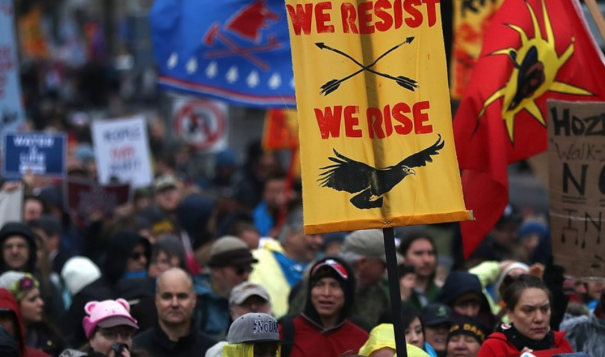News Article Article pages that do not meet specifications for other Trust Project Type of Work labels and also do not fit within the general news category.
Tim Giago: Changing racism takes patience and persistence

Little by little we manage to convince the powers that be to listen to us and our concerns.
I have been writing for years about why most Native Americans do not like to be used as mascots for America’s fun and games and I have made it a point to send some of these columns and editorials to television, radio stations and newspapers in an effort to get them to stop this racism.
Jack Caudill, the station manager at two local television stations in Rapid City worked with his sports editor Vic Quick to stop this practice. The one word I found most offensive was Redskins and I pointed this out in my columns. The sports announcers at these two stations will no longer use the word Redskin in their newscasts any longer. When talking about the professional football team from Washington, D. C., they will simply say “Washington.” They saw no reason to add the mascot of this team to their reporting.
Last week I met with the new publisher, Matthew Tranquill, of the Rapid City Journal. I talked to him about why the word Redskin was offensive. I asked him to look it up in any dictionary and it will verify the fact that the word is an insult to Native Americans.

I told him about the time a group of R-Word fans known as the “Hogs” took a small pig, painted it red, and put feathers on its head and chased it around the 50-yard line at the halftime of one of their football games. I told him that the first thing that came to my mind besides what a racist thing to do was to suppose they took a pig and painted it black and put an Afro wig on its head. Would African Americans consider that as an honor?
Mr. Tranquill assured me that he would meet with his sports writers and so now I will sit back and see if anything positive will come of this meeting.
The point I am trying to make is that if you believe in something strongly enough you just have to be persistent and hammer away at it over and over until you see some positive results. The South Dakota and North Dakota Newspaper Associations should have been at the forefront of our fight against being used as mascots because, after all, it is a story of racism. But instead it was left entirely up to a small American Indian newspaper to bring about the changes we now see in the mainstream media, at least here in Rapid City.
Charlene Teters, as Spokane Indian, and a student at the University of Illinois years ago, stood in front of the football stadium at the University of Illinois to protest the use of a white student dressed in the attire of a Plains Indian, prancing and dancing around the football field as the University’s mascot “Chief Illiniwek.” For her efforts she was villainized, spit on, and had burning cigarettes flipped at her, but she persisted. The University stopped using Chief Illiniwek as its mascots due to her persistent efforts.
As I wrote a few weeks ago the students at Stanford and Dartmouth convinced the school administrations to drop the mascot name “Indians.” The State of Maine is in the process of passing a resolution to have all high schools using Indians as mascots to stop.
Every Native American in this country has the power to bring about these changes. If you object to how Native Americans are depicted by the schools using them as mascots, speak up. Your voices will eventually be heard. I have often been asked by white people why it isn’t wrong for Indian schools to use the word Indian, Chiefs or Braves as their mascots and I always reply that the students at these schools do not insult their own heritage.
As noted above, the changes in the use of the word “Redskin” in the local television and radio broadcasts were changes I thought I would never see, but it happened. I firmly believe that the local daily newspaper will follow suit and then I will go after Sioux Falls and the rest of South Dakota to follow the lead of Rapid City.
Change never happens overnight. It takes patience and persistence to bring about any change and if the change you are trying to make involves racism, your strongest tool is educating the ignorant. Oftentimes the local whites do things denigrating Native Americans without ever considering the harm they are doing. Teach them that it is wrong and racist. Follow our lead. We proved it could be done in a city that many Indians considered to be one of the most racist. But by proceeding with patience and intelligence, we did it without firing a gun.
This story was originally published on Native Sun News Today. They are a subscription news service. Read the original article on fighting racism against Native Americans. Tim Giago, an Oglala Lakota, was born, raised and educated on the Pine Ridge Indian Reservation and can be reached at najournalist1@gmail.com.
